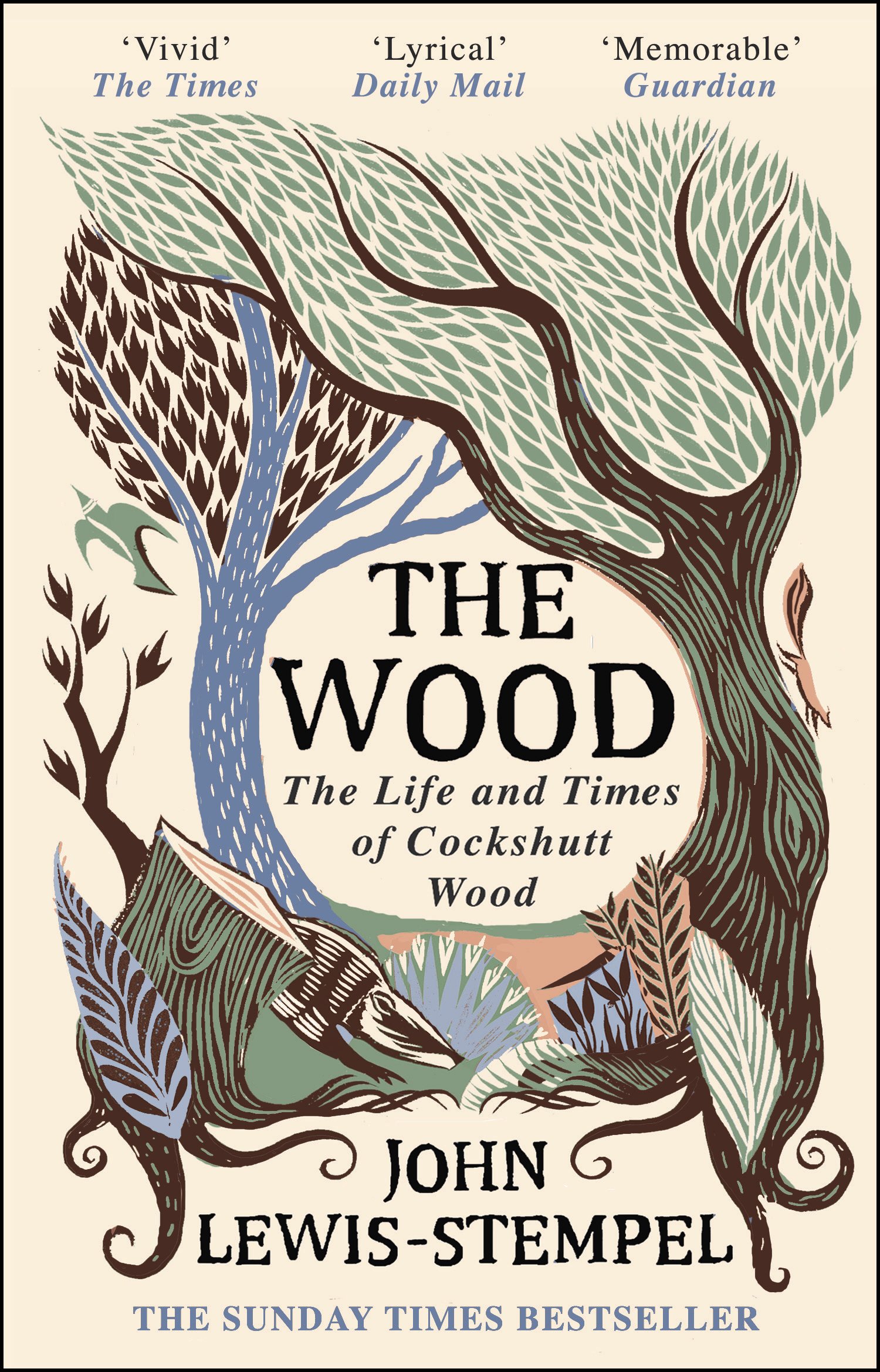From Living Woods Issue 47
Judith Millidge settles down to read The Wood:
The Life and Times of Cockshutt Wood
 THE WOOD: THE
THE WOOD: THE
LIFE AND TIMES OF
COCKSHUTT WOOD
John Lewis-Stempel
Doubleday
Published 8 March 2018
304 pages hardback
Twice winner of the
Wainwright Prize, the
writer John Lewis-Stempel
is a farmer in Herefordshire
who, as he put it, followed
advice to diversify his
farming business by writing.
He has a distinguished body
of work to his name and The
Wood is the latest addition
to his canon.
He is well known for his
thoughtful and lyrical prose,
which is well served by both
the breadth and depth of
his wide-ranging knowledge.
Here is a man who truly
loves the land and has both
the practical skills to nurture
it and the literary talent to
write about it.
The Wood describes a year
in Cockshutt Wood, a small,
three-and-a-half acre mixed
woodland Lewis-Stempel
managed for four years
near his Herefordshire farm.
Beginning in December
when the days are short and
the trees skeletal, Lewis-
Stempel describes his daily
visits to the wood, noting
the bird and animal life,
the seasonal changes and
the minute alterations that
would only be obvious to a
manager or owner.
‘Cockshutt was a sanctuary
for me too; a place of
ceaseless, seasonal wonder
where I withdrew into
tranquillity.’
He uses his wood to graze
small flocks of sheep, some
pigs and a few cows, to
shoot the odd pheasant or
woodcock and to cull the
local squirrel population.
He says that he manages
the wood for wildlife and,
an unashamed lover of
field sports, doesn’t see
why the wildlife shouldn’t
give something back.
Pheasant and woodcock are
sometimes shot for the table
and he blasts squirrel dreys
because he loves song birds
and the squirrels eat their
eggs.
The pigs and cows graze
the understorey and fertilise
the soil of this ancient
woodland. He harvests
holly and young beech to
feed his sheep and pigs,
a reminder of medieval
farming methods which
are now almost completely
forgotten. He works, above
all, to provide balanced
management, fully aware
that he is simply a custodian,
the latest in a long line of
woodland managers.
The observations about
Cockshutt Wood were
written in Lewis-Stempel’s
last year of management
and it affords him the
opportunity to reflect on
the impact of his actions. He
notes, for example, that the
resident brown owls have
produced larger clutches
of eggs over the course of
four years and he attributes
this to their improved food
supply. This can be tracked
back to the decimation of
the brambles by his pigs and
sheep, leaving a woodland
floor of leaf litter and fallen
branches populated by small
mammals.
He thins oaks, plants whips
and saplings, and mourns
when a storm fells an
ancient beech.
‘A storm in the morning
and I’m intentionally in the
centre of Cockshutt…
Timbers splinter; surf
pounds through the crows’
nests, bines of honeysuckle
shriek. . . We hold on, me
and the exhilarated trees.’
Lewis-Stempel’s love of
his woodland will be a
sensation familiar to many
readers of this magazine. His
descriptions of the changing
seasons are poetic and
his knowledge of folklore,
traditional remedies and
recipes, together with
modern arboricultural issues
are a joy to read. He lists the
etymology of all manner of
arboreal and rural terms and
the text is peppered with
prose and poems by earlier
writers such as John Evelyn,
Edward Thomas and John
Clare.
Informative and beautifully
written, this is a book to
inspire woodland owners
and guaranteed to appeal
to woodland enthusiasts
everywhere.